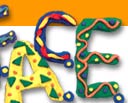| |
Have you ever thought about where your homework paper goes when
you are finished with the assignment? Do you simply throw that paper
away? Or have you ever thought about what ever happens to the old
toys when you out grew them? Did you throw them away too when you
cleaned out your room? What happens to the millions and millions
of tons of waste thrown out by people every day? Well, all that
trash is picked up from your house or school and taken to a landfill
- A landfill that used to be part of nature's landscape. A landfill
that sometimes, if old, seeps toxic waste into nearby water tables.
A landfill that entombs a mountain of waste - unless, of course,
if you recycle.
|
|

|
|
A recent publication by the American Forest and Paper Association
showed that "recycling helps conserve natural resources, reduce
litter and save landfill space...fortunately, Americans recycle
much more paper than we send to landfills." And while over the past
few years, the activity of recycling has been increasing, (in 1997
alone nearly 61 million tons of material did not end up in a landfill
but was instead recycled), the act of recycling is just part of
the picture for the entire recycling process.
According to Melissa Poe, the founder of Kids For A Clean Environment
and current spokesperson for the 100% Recycled Paperboard Association,
"Any student knows that you don't get an A on a term paper if you
turn in the term paper half finished. Americans would never have
walked on the moon if they turned the spaceship around half the
way there. That's why it is so important to complete the recycling
process - to not just recycle but to also reduce, reuse, and purchase
recycled products as well as products packed in recycled materials!"
This is the concept of the "little r & r" program which has an emphasis
on closing the recycling loop by purchasing products made from recycled
materials such as paper. "This is a very important step," explains
Melissa, "because you can recycle all day long but unless someone
is putting to use the material you recycled then it is just going
to sit there until it is eventually thrown away. "Closing the recycling
loop is very simple. First, you can recycle items from your home
or school such as your school papers and your aluminum soda cans.
You can also reuse items. Look for ways that you can reuse things
around your home, for example, an old milk carton can be cut up
to make an outdoor bird feeder. And when you are shopping or helping
your parents shop, look for and show them the "chasing arrows" recycling
symbol. This symbol has been created by the paper industry to help
you identify the 100% recycled paperboard products and packaging.
Remember, just because you throw something away doesn't mean it
has gone away. You have just moved it to a different location! So
put it to good use, recycle it instead!
|
|
 |
 |
| As the national spokesperson for the
100% Recycled Paperboard Association, Melissa Poe is encouraging
everyone to complete the Recycling circle by purchasing goods
made and packed in recycled materials. |
|





